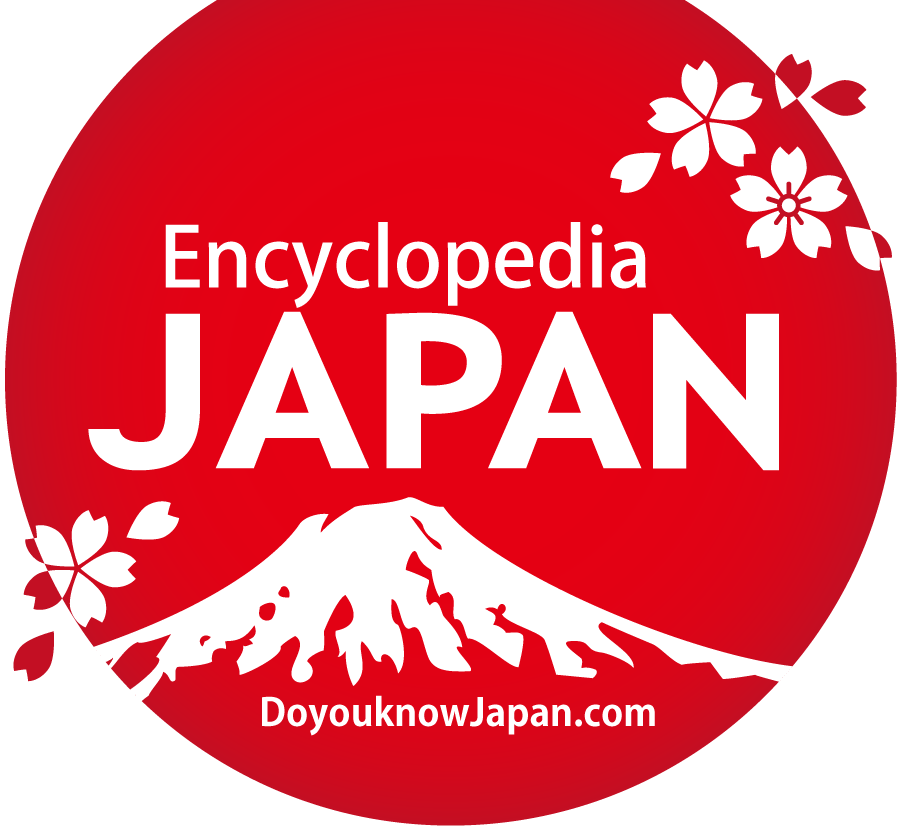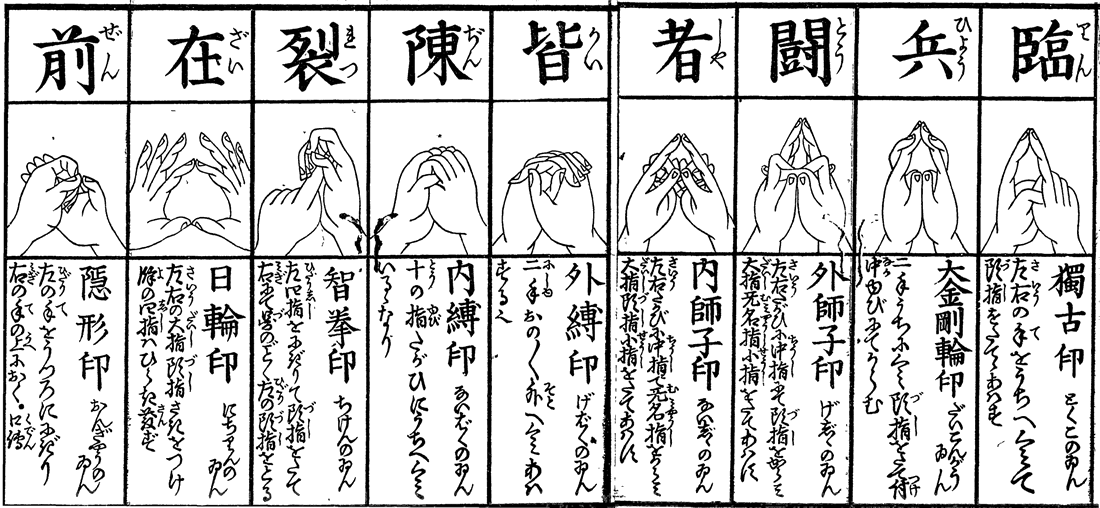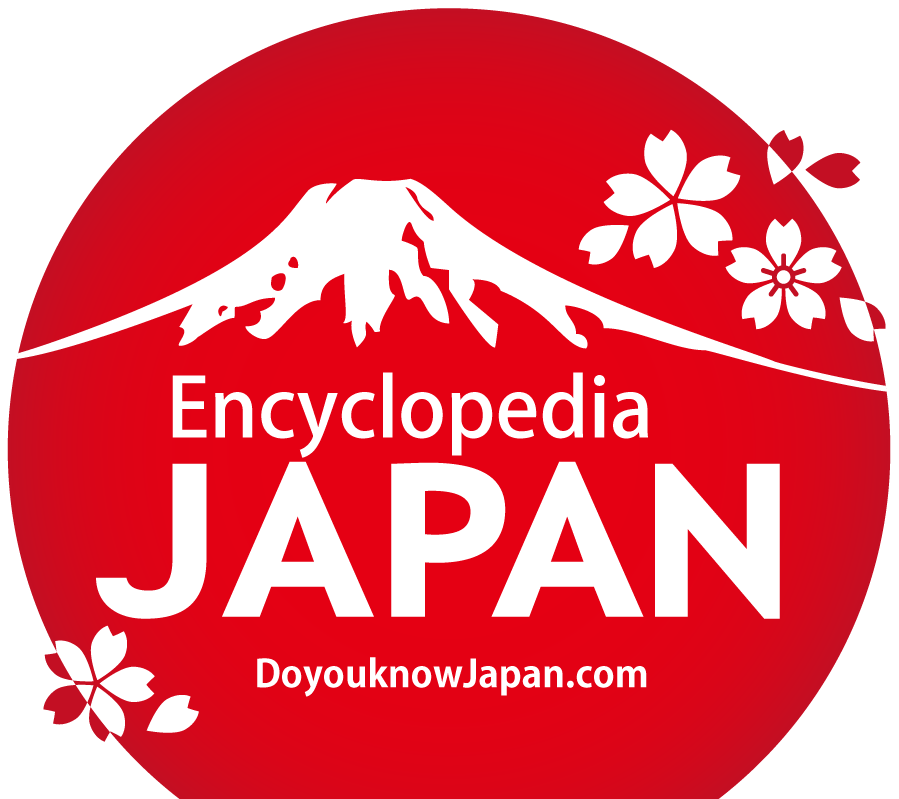Ninja
Brief Overview of Ninja

Professional Spy in Feudal Japan Highly trained in Stealth and Secrecy
Ninja is a name of individual or group who served daimyo (Japanese territorial lord) or feudal lord doing intelligence activities and assassinations from the Kamakura period to Edo period in Japan. Ninja is well known not only in Japan, but also in the world. Ninja was a group who was mainly doing covert operations for a feudal lord. Their position was different from that of samurai or ashigaru (common foot soldier). A recent study shows that ninja was a group of engineers who had abundant knowledge of animals and plants, and chemistry as well as a group of intelligence agents who had great physical ability and were strictly disciplined.
Ninja didn’t wear “Solid Black” They are often described as "dressed in solid black", "wearing kusari-katabira (chain woven protective wear) inside and paint their face with black ink", "carrying a sword on the back" or "break into the enemy territory under cover of darkness", but a figure in black costume can be seen in the night, thus it is considered that their costume was dark blue or persimmon color. Most of the existing costumes which are considered to be "ninja costume" are persimmon color or similar colors. Since they focused on escaping rather than fighting, usually they didn't wear heavy kusari-katabira to be as nimble as possible. The sword carried on the back encumbered their move, they normally belted a sword on. However, when they crawled under floor, they carried a sword on the back to move easily in the narrow space and used it as a shield.
They are often described as "dressed in solid black", "wearing kusari-katabira (chain woven protective wear) inside and paint their face with black ink", "carrying a sword on the back" or "break into the enemy territory under cover of darkness", but a figure in black costume can be seen in the night, thus it is considered that their costume was dark blue or persimmon color. Most of the existing costumes which are considered to be "ninja costume" are persimmon color or similar colors. Since they focused on escaping rather than fighting, usually they didn't wear heavy kusari-katabira to be as nimble as possible. The sword carried on the back encumbered their move, they normally belted a sword on. However, when they crawled under floor, they carried a sword on the back to move easily in the narrow space and used it as a shield.

Art of Ninjutsu in Darkness and Light
They conducted various special trainings and had special tools, the tools are called "Ningu" and the various techniques including art of escaping and fighting are called "Ninjutsu". There are two types of ninjutsu, "Innin" (Ninjutsu of Darkness) and "Yonin" (Ninjutsu of Light). Innin is a way of seeking an inside information and sabotaging by breaking into the enemy territory concealing themselves, the appearance of ninja which generally people imagine is of this situation. On the other hand, yonin is a way of accomplishing a purpose with a trick exposing themselves to the public. So-called intelligence, conspiracy and dividing operation are included. Some kobujutsu (old manners of Japanese martial art) still have traces of ninjutsu.
Special Female Ninja called “Kunoicho” Female ninja is generally called "Kunoichi" (the origin of this code name was a Japanese character "女" meaning woman, and it is considered that this character was broken down into three characters "く (ku)", "ノ (no)" and "一 (ichi")). there is a description that a female ninja snaked into the castle masquerading as a housemaid and it is considered that she used "women's gossip" for the intelligence activity and created considerable performance. Famous kunoichi appeared in historical fact is a group of arukimiko who served Shingen TAKEDA.
Female ninja is generally called "Kunoichi" (the origin of this code name was a Japanese character "女" meaning woman, and it is considered that this character was broken down into three characters "く (ku)", "ノ (no)" and "一 (ichi")). there is a description that a female ninja snaked into the castle masquerading as a housemaid and it is considered that she used "women's gossip" for the intelligence activity and created considerable performance. Famous kunoichi appeared in historical fact is a group of arukimiko who served Shingen TAKEDA.


1. Documentary of Ninja (46:55)
2. Fight Scene between Ninja and Samurai (4:31)
3. Documentary of Art of Ninja (27:16)
Origin and History of Ninja

Ninja arose with the Period of Warring States in Japan
There are several theories about the origin of ninja. They formed some groups in regions around Japan. Particularly, groups of ninja which were based in Koga and Iga were famous. In these locations, there were many ninja houses and they conducted daily training. Since most territories of Koga and Iga were shoen (manor in medieval Japan) in the Kamakura period, they were not controlled by shugo (provincial constable) or jito (manager and lord of manor), but when the shoen system collapsed in the Sengoku period (in Japan), dozens of jizamurai groups struggled for power. It is considered that "Ninjutsu" arose spontaneously in the condition that each jizamurai always fought an information war and a guerrilla war to maintain power.
Ninja worked for, and Fought against Samurai at the same time In Iga Province, three families of Jonin (upper class Ninja), the Fujibayashi clan, the Momochi clan and the Hattori clan controlled other jizamurai and adopted collegial system to form the area not controlled by daimyo (Japanese territorial samurai lord) in the Sengoku Period (period of warring states). They united and fought against invasion from outside, when famous samurai load Nobunaga ODA sent Katsutoshi TAKIGAWA to control Iga Province, they dismissed him, and also eliminated Nobukatsu ODA's army who invaded in retribution (the first Tensho Iga War). When Nobunaga schemed a conspiracy with a part of enemy and invaded again with a great army, the other groups of ninja in Iga Province suffered catastrophic damage (the second Tensho Iga War). It is said that Tanba MOMOCHI and other one hundred ninja fled down to Negoro, Kishu Province.
In Iga Province, three families of Jonin (upper class Ninja), the Fujibayashi clan, the Momochi clan and the Hattori clan controlled other jizamurai and adopted collegial system to form the area not controlled by daimyo (Japanese territorial samurai lord) in the Sengoku Period (period of warring states). They united and fought against invasion from outside, when famous samurai load Nobunaga ODA sent Katsutoshi TAKIGAWA to control Iga Province, they dismissed him, and also eliminated Nobukatsu ODA's army who invaded in retribution (the first Tensho Iga War). When Nobunaga schemed a conspiracy with a part of enemy and invaded again with a great army, the other groups of ninja in Iga Province suffered catastrophic damage (the second Tensho Iga War). It is said that Tanba MOMOCHI and other one hundred ninja fled down to Negoro, Kishu Province.

Iga and Koga Ninja swore Allegiance to Edo Bakufu
Iga ninja started to be hired by Edo bakufu (Japanese feudal government headed by a samurai shogun) because when Ieyasu TOKUGAWA visited Sakai (present-day Sakai City, Osaka Prefecture) for sightseeing at the time of Honnoji Incident, they escorted and helped him to pass through Iga Province. In particular, Masanari HATTORI was treated preferentially and one of the gate of Edo-jo Castle was named after him and it still remains as a geographical name of Tokyo, "Hanzomon". As well as seeking inside information of territorial lords for the Tokugawa shogunate, they kept peace of the Edo-jo castle town as doshin (a police constable) by handling surveys near the Edo-jo Castle, guard of O-oku (the inner halls of Edo Castle where the wife of the Shogun and her servants reside) and management of vacant residences. there is a record that when Shimabara War occurred, a squad of Koga ninja sneaked into Hara-jo Castle where rioters barricaded themselves and found the fact that rioters' provisions were running out.
 A haikai poet, Basho MATSUO who walked across provinces in the Edo period was from an area which is present-day Iga City, Mie Prefecture. Thus, there is a theory that Basho MATSUO was actually a ninja or a spy and it is used as a subject of novels and so on. The fact that it is physically difficult for 47 years old man to travel tens of kilometers per day as described in his famous book "the Narrow Road to the Deep North" was used as the basis for the theory. An ukiyo-e artist, Hokusai KATSUSHIKA who lived in the Edo period is also considered to have been a kogi-onmitsu (shogunate ninja). When Kurofune (the Black Ships) led by Commodore Matthew PERRY arrived off the coast of Urawa, the shogunate spy acted for investigation and it was the last activity of so-called ninja.
A haikai poet, Basho MATSUO who walked across provinces in the Edo period was from an area which is present-day Iga City, Mie Prefecture. Thus, there is a theory that Basho MATSUO was actually a ninja or a spy and it is used as a subject of novels and so on. The fact that it is physically difficult for 47 years old man to travel tens of kilometers per day as described in his famous book "the Narrow Road to the Deep North" was used as the basis for the theory. An ukiyo-e artist, Hokusai KATSUSHIKA who lived in the Edo period is also considered to have been a kogi-onmitsu (shogunate ninja). When Kurofune (the Black Ships) led by Commodore Matthew PERRY arrived off the coast of Urawa, the shogunate spy acted for investigation and it was the last activity of so-called ninja.Both Ninja and Samurai disappeared in peaceful Meiji period
In Meiji period, the administration was transferred to new Meiji Government and Japanese army and navy were created through modernization policy, then ninja lost their job. It is said that after ninja lost the scene of their activities, they got new jobs such as farmers, policemen, pyrotechnicians with special skills of using fire, doctors or pharmacists with knowledge of medicine. Since the said arrival of Kurofune, the existence of ninja had been forgotten, but ninja started to be featured in novels and period dramas from late 1950 and they have come to be recognized among Japanese again.

Two Most Famous Ninja Schools
KOGA (KOKA) School of Ninja
Overview of Koga (Koka) School
Koga School (or Koka School) is the most famous school of ninjutsu (ninja technique) along with Iga-ryu, but it is the name that refers to collectively the schools originating from the Koka region in Omi Province and the school named "Koga School" did not exist. Koga, originally pronounced "Koka," is a toponym, but only when referring to the ninjutsu, the mistakenly pronounced "Koga" has become common.
Iga-ryu exists in the region separated by only a mountain from that of Koga School.
Characteristics of Koga School
It originated from today's Koka and Konan Cities in Shiga Prefecture. The people of Koga School were usually engaged in farming or peddling to collect information in various places and, once called, they went to the war fronts or the rear of the battlefields to engage in espionage. Koga School was highly skilled at dealing with medicine among the ninjutsu schools, a vestige of which can be seen in the fact that many pharmaceutical companies are located in Koka even today.
Though Koga belonged to the Rokkaku clan, it formed a soson (a community consisting of peasants' self-governing association), in which all issues were decided and managed by majority (council system). This was quite unusual at the time even at the nationwide level.
Koga ninja had no Jonin (highest level of ninja) and the highest level of the Koga ninja was Chunin (middle level of ninja).
History of Koga School
In the late Muromachi period, the Sasaki Rokkaku clan of Omi Province steadily built up the military force with the Kannonji-jo Castle as their headquarter and started to take light of the orders from the Ashikaga shogunate or even ignore them, therefore Shogun Yoshihisa ASHIKAGA sent an army to subjugate the Rokkaku clan in 1487 and a battle broke out. This battle is called 'Magari no jin'.
When Yoshihisa mobilized daimyo (Japanese feudal lords) from various provinces and got close to the Kannonji-jo Castle, the headquarter of the Rokkaku clan, the father and the son Hisayori and Takayori Rokkaku moved to the Koka-jo Castle to avoid a direct confrontation. Then, Yoshihisa moved the headquarter to Magari no Anyo-ji Temple located in Kurita-gun County and attacked the Koka-jo Castle, and the Koka-jo Castle fell, but the father and the son Rokkaku escaped and ordered the Koga warriors who followed them to resist adamantly against Ashikaga by guerrilla warfare in the mountains. It is said that Koga warriors took a geographical advantage in the mountains to make various surprise attacks against the bakufu army and tormented them by using fire and smoke on Yoshihisa's headquarters during the night.
So, the battle did not easily end, but the death of Yoshihisa in battle in 1489 marked the end of the three-year conflict, and the Rokkaku clan survived. The name of Koga warriors became well-known throughout the country because their elusive and effective guerrilla warfare and high combat ability in this battle were so impressive. The 53 families of jizamurai (literally, soldiers of the land) that participated in this battle were called the "53 families of Koga" (among them, the families which received a letter of commendation from the Rokkaku clan for taking part in the battle and were valued were called the "21 families of Koga") and they were active in both intelligence and fighting activities under the Rokkaku clan until the Koka region was seized by Nobunaga ODA.
After the Koka region fell under the control of Hideyoshi TOYOTOMI from Nobunaga ODA, the Koga warriors were mainly missioned to spy on Ieyasu TOKUGAWA. This fact was featured in storytellings or Yomihon (books for reading) in the Edo period, in the form of "Iga ninja force versus Koga ninja force" stories. Actually it was a war by proxy between Tokugawa and Toyotomi, but because of this the confrontation plot of "Iga vs. Koga" often appears in novels or ninja cartoons even today.



 Shinobigatana (Ninja Sword)
Shinobigatana (Ninja Sword)








 Unique Japanese Weapon of Ninja's Throwing Blades
Unique Japanese Weapon of Ninja's Throwing Blades Kurumaken have blades placed on a cross-shaped or fylfot-shaped iron plate, and bo shuriken are small sticks made of iron with one or two ends sharpened. Kurumaken stabilize while spinning in the air during toteki, so the accuracy of hitting the target can improve after a relatively short period of training. On the other hand, a disadvantage is that the sound they generate when spinning makes it easier to be noticed by the target, and that it is inconvenient to carry along. Additionally, since it does not pierce deep into the target, it is not effective enough in killing or wounding an enemy, but sometimes such weakness is offset by applying poison to the blade. Copper alloy may be used on the blade for this purpose. According to the number of blades pointing radially, they are called sealed cross blades, roppoken (six-blade shuriken), happoken (eight-blade shuriken), and ten-blade shuriken among other types.
Kurumaken have blades placed on a cross-shaped or fylfot-shaped iron plate, and bo shuriken are small sticks made of iron with one or two ends sharpened. Kurumaken stabilize while spinning in the air during toteki, so the accuracy of hitting the target can improve after a relatively short period of training. On the other hand, a disadvantage is that the sound they generate when spinning makes it easier to be noticed by the target, and that it is inconvenient to carry along. Additionally, since it does not pierce deep into the target, it is not effective enough in killing or wounding an enemy, but sometimes such weakness is offset by applying poison to the blade. Copper alloy may be used on the blade for this purpose. According to the number of blades pointing radially, they are called sealed cross blades, roppoken (six-blade shuriken), happoken (eight-blade shuriken), and ten-blade shuriken among other types. The bo shuriken is a simply-shaped weapon, but the length, and center of gravity among other factors vary according to the school. It overcomes the weaknesses of kurumaken such as regarding portability, the power to kill and wound, and the sound when thrown, but requires a more advanced toteki skill. In order to make it easy to carry, there are pairs of bo shuriken with blades on both sides, secured in the middle like scissors, to close into the shape of a stick when carried and open into a cross when used. The Negishi-ryu school uses a heavy shuriken with the center of gravity at the front, aimed at stabilizing the flight of the weapon, as well as increasing its force. Depending on the practitioner, various things can be used as 'shuriken,' such as the shuriken 'hyo' (also known as Chinese-style), which is shaped like an arrowhead, or unusually heavy and huge shuriken.
The bo shuriken is a simply-shaped weapon, but the length, and center of gravity among other factors vary according to the school. It overcomes the weaknesses of kurumaken such as regarding portability, the power to kill and wound, and the sound when thrown, but requires a more advanced toteki skill. In order to make it easy to carry, there are pairs of bo shuriken with blades on both sides, secured in the middle like scissors, to close into the shape of a stick when carried and open into a cross when used. The Negishi-ryu school uses a heavy shuriken with the center of gravity at the front, aimed at stabilizing the flight of the weapon, as well as increasing its force. Depending on the practitioner, various things can be used as 'shuriken,' such as the shuriken 'hyo' (also known as Chinese-style), which is shaped like an arrowhead, or unusually heavy and huge shuriken.
 Techniques to slip into the enemy camp to gather intelligence are described in Ninjutsu-sho (book of Ninjutsu) such as Mansei (or Bansei) Shukai and Shonin-ki. Koga school that fought against the Muromachi bakufu (Japanese feudal government headed by a shogun) and Iga School that was famous for Hanzo HATTORI, who was a retainer of Ieyasu TOKUGAWA are well known. The Iga School excelled in individual activities, while the Koga school excelled in group activities. It is said that as many as 49 schools of Ninjutsu used to exist in Japan including “Hagakure”, “Togakure”, “Kumogakure”.
Techniques to slip into the enemy camp to gather intelligence are described in Ninjutsu-sho (book of Ninjutsu) such as Mansei (or Bansei) Shukai and Shonin-ki. Koga school that fought against the Muromachi bakufu (Japanese feudal government headed by a shogun) and Iga School that was famous for Hanzo HATTORI, who was a retainer of Ieyasu TOKUGAWA are well known. The Iga School excelled in individual activities, while the Koga school excelled in group activities. It is said that as many as 49 schools of Ninjutsu used to exist in Japan including “Hagakure”, “Togakure”, “Kumogakure”. It is a skill to praise other person and watch for a chance.
It is a skill to praise other person and watch for a chance. It is a skill to make enemies stuck when ninja runs away from them. In particular, katon (a tonjutsu using fire), suiton (a tonjutsu using water), doton (a tonjutsu using dirt), mokuton (a tonjutsu using tree) and kinton (a tonjutsu using valuable article) are called goton (five tonjutsu).
It is a skill to make enemies stuck when ninja runs away from them. In particular, katon (a tonjutsu using fire), suiton (a tonjutsu using water), doton (a tonjutsu using dirt), mokuton (a tonjutsu using tree) and kinton (a tonjutsu using valuable article) are called goton (five tonjutsu). It is an art of ninja sword fighting and assassination
It is an art of ninja sword fighting and assassination






